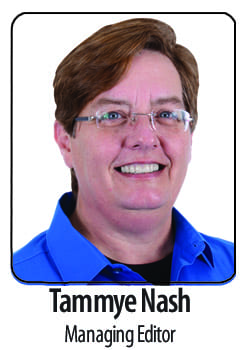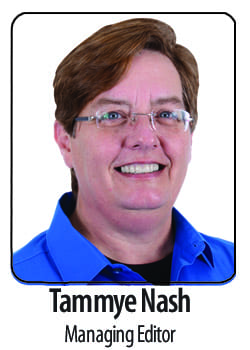(and if you’re white, you probably are, too)
 I am a racist.
I am a racist.
Trust me when I say I take absolutely no pride nor pleasure in that confession. But it’s the truth. And if you are white, it’s very likely that you are racist, too.
I’m not saying that I am (or that you are) a card-carrying, Confederate-flag-waving, pointy-white-hood-wearing member of the KKK. And I am not saying that either you or I deliberately discriminate against people of color (or anyone else).
What I am saying is that racism is built into us because it is built into the society and the culture in which we live. And so is “white privilege,” another phrase that tends to raise blood pressures and voices.
Don’t believe me? Think about it. When you drive through a minority neighborhood, do you automatically look to make sure your car doors are locked? Do you even drive through a minority neighborhood if you can help it?
Someone told me a story once, about a white woman driving in Houston. She pulled up to a red light and when she glanced to her left, realized that the only person in the car next to her at the light was a black man. It was a nice car; he was a well-dressed man who did nothing but glance toward her, just as she had glanced toward him.
Still, without even realizing what she was doing, she reached over and locked her car door. This was back in the day when the lock was a knob on the door up by the window, not a button on the door handle. That meant her action was clearly visible to the man in the car next to her.
The woman realized what she had done, realized how insulting it was, and gave the man a sheepish smile. He smiled back, then very deliberately reached across his front seat to very visibly and obviously lock his own car door that was nearest her.
That’s what I mean about built-in racism. We don’t do it on purpose. We never consciously intend to behave that way. And sometimes we don’t even realize what we’ve done, even after the other person “locks their own door” against us.
But lack of ill intention aside, it is still racism. It is still hurtful to those individuals, and it is still harmful to all of us on both sides of the racial equation.
Here’s another example:
The weekend of Jan. 20-22, I traveled to Washington, D.C., to cover the Women’s March there. On the trip back, I had to fly first to Atlanta, then switch planes to get from Atlanta to North Texas.
On the first leg of my trip, I boarded in the “C” group, the third group to get on board. The flight was sold out — they had already asked for volunteers to wait for a later flight — and we were told as we got on the plane to take the first available seat. I ended up in the center seat of the back row, right side of the plane.
As the remaining few passengers got on board, I waited to see who would be sitting beside me (the window seat was taken by a young woman who at least pretended to already be asleep when I sat down and who never really stirred throughout the flight). The aisle seat beside me was quickly taken by a young man of Middle Eastern descent.
He nodded as he sat down, and I nodded back. We sat there silently for a bit, and in my mind, I immediately started flipping through all these doomsday scenarios of this nice-looking, neatly-dressed young man with the dark skin, and beard and big brown eyes leaping up during the flight, pulling some weapon from hiding and hijacking the plane, blowing it up, forcing it to crash.
Not because he did anything or acted in any way suspicious. Not because there was anything alarming about him — other, of course, than the fact that he appeared to be of Middle Eastern descent.
And that? That was my racism at work.
I knew I was being ridiculous the minute that the little scenes started playing in my head. I knew it, and I scolded myself for it. But it happened.
That young man and I ended up talking for a good bit of the two-hour flight. He told me he had flown to D.C. to visit an old friend, without realizing that it was inauguration weekend. He said he and his friend, curious about it all, had gone down near the Capitol to see the inauguration and people watch.
It was all amazing, he told me, but there was this one street where he didn’t feel comfortable at all. It was full of people waving flags and wearing red hats and oozing hatred. He talked about the way people had glared at him, about the hateful language they had used.
If this was Trump’s America, he said, it was a scary place.
This young man talked about being worried about the way people were behaving these days, like it was good and right to hate people who were different. He was a bit concerned, he said, of things to come. He was a little afraid about his place now in this country. “I’m mostly Muslim, and that’s not a good thing to be in America these days,” he said. “These days if you aren’t white and Christian, then it’s like you aren’t safe.”
He didn’t include “straight” or “cisgender” or “male” or “rich” in that list but they fit there too. And he’s right. We aren’t safe.
That’s why those of us who don’t fit the criteria for power and safety in Trump’s America have to look inside ourselves and really see our own prejudices — our own racism, classism, sexism, homophobia, transphobia, misogyny — and recognize it for it is, admit what it is. We have to reach deep down, grab that prejudice by its neck and pull it out of ourselves into the light of day, where it cannot thrive and survive.
I am racist. Many of you are racist. That doesn’t mean we are bad people. It just means we are human and we are a product of our society. The important thing is that we — all of us, no matter who we are — recognize our own prejudices, admit them and take control of them, instead of letting them control us.
Because we all have to come together and fight together, for ourselves and for each other, if we want to win this battle and take our country back.
Tammye Nash is managing editor of Dallas Voice. Contact her by email at nash@dallasvoice.com.
This article appeared in the Dallas Voice print edition January 27, 2017.

